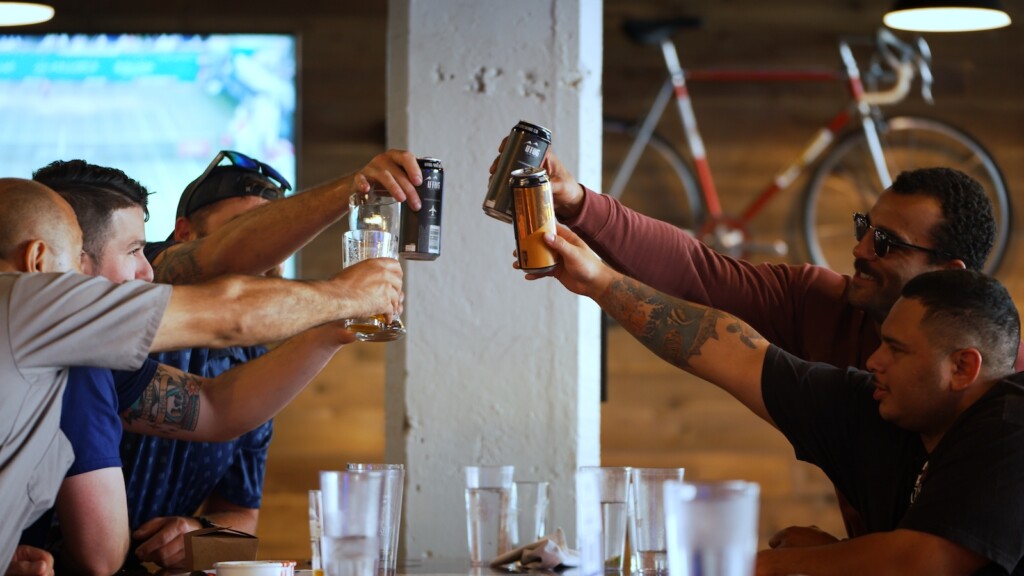
Mandatory 18% hospitality fee at popular eatery ruffles feathers.
Utah-owned 360 Degrees Restaurant Group (Pig & A Jelly Jar, Pig Kitchen, WB’s Eatery), is among the first in the state to embrace a no-tip, “hospitality included” (HI) model. Just as other metropolitan restaurateurs in the U.S. who adopted it were going back to traditional tipping in the wake of the pandemic, 360 Degrees owners Vivi and Amy Wanderely-Britt were ushering in the experimental system, resulting in more than staffing shortages and supply chain issues. Their biggest challenge has been customer pushback over the automated 18% service fee.
The idea behind HI models is to replace an outdated work-for-tips pay system with a fair and consistent income for service industry employees. The national organization One Fair Wage (OFW), along with lawmakers in some states, are calling for the elimination of the federal subminimum wage of $2.13 for tipped workers, which would require all employers to pay the full minimum wage “with fair, non-discriminatory tips on top.” Other advocates call for the elimination of tips entirely, citing problems like race and gender income gaps, pay inequality between the front and back-of-house staff, sexual harassment, and income insecurity.
Starting in November 2019, the Wanderely-Britts eliminated tipping at their restaurants, implemented an 18% service fee, and started paying their employees $12-$22.50 an hour. Any cash tips received are used to donate meals for community organizations in need.
“Beyond providing our employees a stable living wage, we believe that removing the traditional model of tipping also removes any unnecessary biases our teammates may receive,” says Vivi.
They say that unlike others in the industry during the pandemic, their employees were protected from reduced income due to less dine-in traffic and the impact of declining tips.“I don’t want to be successful knowing that half my team has to be evaluated hour by hour, second by second,” says Amy.
But this is a hard sell for diners in America who are accustomed to tipping as a means of expressing their appreciation, or displeasure, with service and food quality.

HI models might be less of an issue at full service restaurants where patrons are aware of the policy, but most of the customers from the 360 Degrees restaurants who expressed anger both in-person and in negative Google reviews over the 18% service fee specifically mention a lack of notification about the no-tip/hospitality included policy, particularly in a counter service-style atmosphere.
Posted comments range from somewhat understanding to seething: “We were not informed of the service fee but noticed it afterward.” “Food was good ― no complaints there. However, if you are going to charge a mandatory 18% gratuity, maybe provide some actual service.” “Why am I paying for my food before I get it and you are charging me mandatory gratuity that the restaurant chooses? Huge turn off. No incentive for the staff to do a good job if they have a tip before they’ve earned it.” “I believe tips are to be earned, not just mandatorily given regardless of how good or bad service is, and for that reason this place has lost my business indefinitely.”
In a response, 360 Degrees wrote: “As for the service fee, we’re sorry if it came as a surprise. We include it in every bill to make sure our staff are fairly compensated. If you still have any questions, please feel free to reach out offline.”
The outrage is compounded over the same service charge being added for to-go orders. “They charged us 18% for a tip on a to go order???!! Is this for real? The food is good but not enough for that kind of tip on a TO GO order. Will not be coming back here, that is for sure. Save your money and go somewhere else!!!!!! Ridiculous.”
360 Degrees responded that the reason for the service charge on to-go orders is to help the team with the high surge of takeout orders.
When asked about the lack of notification about the policy, 360 Degrees said there will be signage in all of the stores and they are working to get it on their website.
It’s unclear whether the controversy is impacting business. There is almost always a wait, especially in the morning, at the popular Salt Lake City and Ogden eateries, and most reviews are four to five stars raving about the Southern-style comfort food. And some customers appreciate the automatic service fee.
Shawn Thompson, a regular customer at the Ogden Pig and A Jelly Jar, said, “Personally, I appreciate the hospitality fee included in the initial transaction when ordering. It seems fair and rational that employees are being compensated more or less in proportion to the amount of food and drinks they have to manage. Also, it takes the pressure off in determining the exact appropriate gratuity. And when you are ready to leave, you can leave, no waiting around for the check. Very efficient.”
Still, dealing with customer backlash is a daily occurrence. A current employee anonymously stated that having to constantly explain the fee to upset customers is frustrating. They do appreciate having a consistent paycheck and some paid holidays off, but wonder if they would make more money in tips.
Another employee says they definitely make better money working for tips. “I’m hesitant to remain there specifically because of the no tip policy. I understand that tipping has some downsides … I can make a much more ‘livable wage’ because people give me what my service to them was worth.

Eddie Afualo is a former employee at Pig and A Jelly Jar in Ogden who didn’t like the policy, “but that might be because the owners went through several versions of it before finally landing at the ‘no tip’ model and higher hourly pay,” he said. “Now that they are counter service, I think it makes sense … the change provided a nice opportunity for less experienced people to make a higher hourly wage, but for me it was a steep pay cut from what I would make.”
Vivi says that before the switch to a higher hourly wage to replace tip-based income, employees weren’t aware of how much they really made. Now, she said, they can make a budget and plan ahead for bills with a consistent paycheck. 360 Restaurant Group is currently working on providing health insurance benefits and PTO to employees.
“I want you to have healthcare and paid vacation time. That’s more important to me than fighting over a hospitality fee,” says Amy, who has been in the service industry most of her life, and became a general manager at McDonald’s by age 20.
They understand this trailblazing concept is yet to be proven, but believe it’s worth the battle. “We’ve got to stay in business or it’s a pipedream,” she said. “We’ll see what happens.”
RELATED CONTENT
Pig Out: Pig & a Jelly Jar 3.0
Funky, Fun & Fab Restaurant in Ogden: A Visit To WB’s Eatery
From McDonalds Manager to Local Restaurant Visionary
Cooking Their Way to Success – Two Utah Female Chefs Share Expertise
A Tour of Bars, Breweries, Speakeasies, and Pubs in Ogden
Running a Restaurant in a Pandemic — Spoiler: It’s Not All Bad News
Women in the Kitchen: Gaining Ground & Respect in Utah’s Food Industry
Al Fresco Eats: 10 Perfect Patios for Outdoor Dining
Salt Lake’s Dog Friendly Restaurant Patios
Subscribe to Utah Stories weekly newsletter and get our stories directly to your inbox






